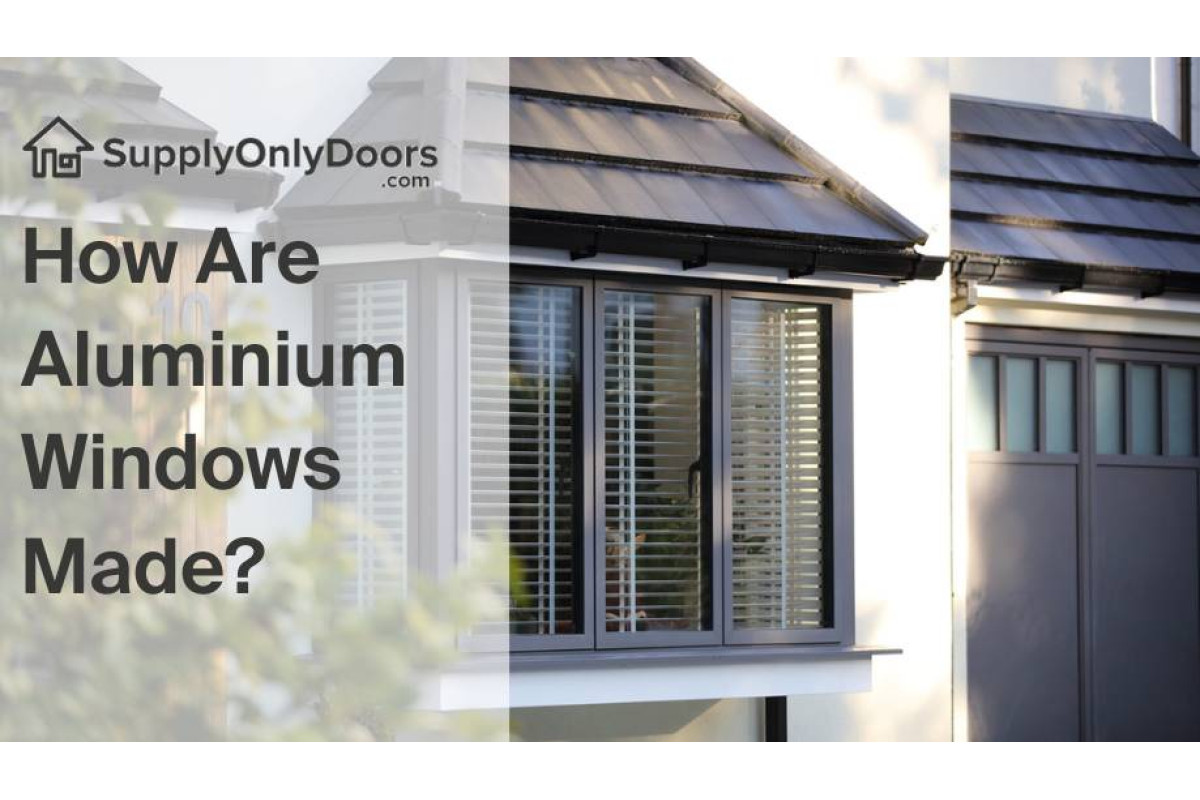How Are Aluminium Windows Made?

Aluminium windows and doors are an elegant and stylish addition to any home, building or property.
Aluminium is a versatile metal that can be extruded, forged or moulded into various shapes and designs. Manufacturing aluminium windows and doors is a complicated and highly technical procedure.
The production process must conform to established industry standards and quality management systems.
All aluminium windows and doors must meet quality requirements and assess environmental impact.
Many consumers are unaware of what it takes to manufacture the best aluminium windows and doors.
This post will walk you through the process of how aluminium windows and doors are made – from start to finish. We’ll also explore why aluminium systems are among the most reliable window systems on the market today.
Why Aluminium?
Aluminium windows and doors are manufactured using a high-pressure extrusion process. This process involves thermal breaks, powder-coated aluminium profiles and advanced packing.
In plain English: they’re among the best on the market. And with made-to-order designs, you can customise them however you like.
Check out our blog full of advice on aluminium windows and doors.
Manufacturing Aluminium Windows
Manufacturing just one aluminium window is a highly technical task.
Suppliers use:
- An extrusion press
- Aluminium double-head cutting machines
- Corner cutting machines
- Punching
- Profiling end milling machines
- Window milling drilling machines
The first step is to extrude the aluminium. In this process, metal is forced through machines called dies to be manipulated into desired shapes.
In the case of both aluminium windows and doors, they are shaped into frames that are strong and durable.
Cutting
Detailed construction plans tell manufacturers how to cut the aluminium.
As per design requirements, a double-head saw is used to cut the material to the right length. General cutting is either 90° or 45° cutting.
Assembling Aluminium Windows
The construction detail drawing indicates that aluminium profiles are connected with screws.
Aluminium windows and doors can be assembled using a right angle butt joint, a 45° angle butt joint, or a vertical butt joint.
Coating
Next, the aluminium frames are treated and cleaned to prepare them for painting.
The frames are then placed in a coating booth for powder coating before being placed in specialised ovens for baking.
The material can also be prepared for various colours when the aluminium is powder coated.
Insulation
Most door and aluminium window profiles use thermal breaks to make them energy efficient. This also minimises heat loss and less cold air travelling into your home, as it helps to draught-proof your aluminium window.
A thermal break is formed when two profiles are rolled onto a unique polyamide thermal barrier.
Insulation can also massively help to prevent condensation on your windows.
Installing The Glass
The glass should fit evenly in the installation groove and meet the embedding specifications. The outer rubber strip is installed first when installing glass with adhesive tape.
The glass is positioned, supported by rubber padding, and the inner adhesive strip is installed.
Packaging
The next step is to wrap and protect the aluminium. Sophisticated packing machines will help with the wrapping and packing process.
These aluminium frames are then stored on special stillages before being sent out for delivery.
Features Of Aluminium
Extracted aluminium must be cut, bent, and shaped to fit the required specifications. Our supply only doors and windows are made-to-measure. This minimises air loss and noise pollution because their components fit snuggly.
Aluminium can also be customised to any shape, size, colour or style, making it more versatile than uPVC. Timber furnishings need regular painting, unlike aluminium.
Aluminium products, such as windows, doors, and frames, effectively insulate homes and businesses. This eco-friendly feature can result in a noticeable improvement in thermal performance, which is one of the many reasons aluminium sliding patio doors are very popular with homeowners.
uPVC products expand and contract depending on the temperature, making it tricky to fit windows and doors made of this material.
An incorrectly fitted window or door can cause seals to break and lead to damaging the frame. Aluminium systems don’t expand or contract with temperature changes, as the material is hardy and robust.
Aluminium is also more sustainable and eco-friendly than many other materials. The production process uses less energy, and aluminium is recyclable – both critical factors these days.
FAQs
Are aluminium windows safe?
An aluminium window is made from solid materials and can withstand attempted break-ins. Its modern security features make it superior to other windows regarding protection.
Do aluminium windows rust?
Aluminium windows and doors are corrosion-resistant, do not swell or crack in heat and are weatherproof. Aluminium is resistant to rust due to its specific chemical composition.
Are aluminium windows soundproof?
Aluminium windows have some of the highest noise reduction coefficients available. Be aware, though, that it will come with extra costs.
These windows are often coupled with aluminium bifold doors by homeowners to maximise the soundproofing of their homes.
Are aluminium windows expensive?
Aluminium windows are a cost-effective choice when you consider their benefits. The metal is strong and sturdy, and aluminium windows can last long.
They are often paired with aluminium French doors to create a contemporary and sleek style for your home.
Are aluminium windows better than steel windows?
Aluminium requires less maintenance than steel. It is more resistant to corrosion, making it ideal not only for windows, but for roof lanterns as well since it is more difficult to reach them.